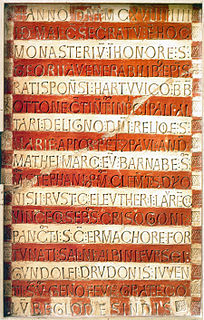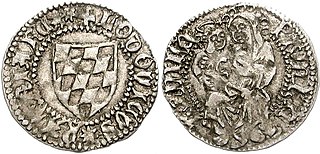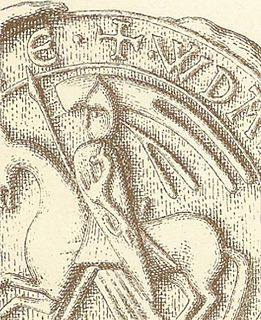
Aquileia is an ancient Roman city in Italy, at the head of the Adriatic at the edge of the lagoons, about 10 kilometres (6 mi) from the sea, on the river Natiso, the course of which has changed somewhat since Roman times. Today, the city is small, but it was large and prominent in classical antiquity as one of the world's largest cities with a population of 100,000 in the 2nd century AD and is one of the main archaeological sites of northern Italy. In late antiquity the city was the first city in the Italian Peninsula to be sacked by Attila the Hun.

Cividale del Friuli is a town and comune in the Province of Udine, part of the North-Italian Friuli Venezia Giulia regione. The town lies 135 metres (443 ft) above sea-level in the foothills of the eastern Alps, 15 kilometres (9 mi) by rail from the city of Udine and close to the Slovenian border. It is situated on the river Natisone, which forms a picturesque ravine here. Formerly an important regional power, it is today a quiet, small town that attracts tourists thanks to its medieval center.

The Patriarchate of Aquileia was an episcopal see in northeastern Italy, centred on the ancient city of Aquileia situated at the head of the Adriatic, on what is now the Italian seacoast. For many centuries it played an important part in history, particularly in that of the Holy See and northern Italy, and a number of church councils were held there.

Saint Paulinus II was a priest, theologian, poet, and one of the most eminent scholars of the Carolingian Renaissance. From 787 to his death, he was the Patriarch of Aquileia. He participated in a number of synods which opposed Spanish Adoptionism and promoted both reforms and the adoption of the Filioque into the Nicene Creed. In addition, Paulinus arranged for the peaceful Christianisation of the Avars and the alpine Slavs in the territory of the Aquileian patriarchate. For this, he is also known as the apostle of the Slovenes.

The County of Gorizia, from 1365 Princely County of Gorizia, was a State of the Holy Roman Empire. Originally mediate Vogts of the Patriarchs of Aquileia, the Counts of Gorizia (Meinhardiner) ruled over several fiefs in the area of Lienz and in the Friuli region of northeastern Italy with their residence at Gorizia (Görz).
Engelbert III, a member of the Rhenish Franconian House of Sponheim, was Margrave of Istria from 1124 until his death.
Nicolaus of Luxemburg was Patriarch of Aquileia from 1350 until 1358.

The Patria del Friuli was the territory under the temporal rule of the Patriarch of Aquileia and one of the ecclesiastical states of the Holy Roman Empire. In 1420, the Republic of Venice acquired it, but it continued to be ruled for some time under its own laws and customs.
Francesco Barbaro was a Venetian diplomat and an Italian Catholic bishop

The Prüfening dedicatory inscription is a high medieval inscription impressed on clay which was created in 1119, over three hundred years before Johannes Gutenberg, by the typographic principle. The inscription plate belongs to the Prüfening Abbey, a former Benedictine monastery, in Regensburg, Germany.

Louis of Teck was a German prelate, who was Patriarch of Aquileia from 1412 until his death.

Henry III, Count of Gorizia was a member of the Meinhardiner dynasty.

Berthold was the count of Andechs from 1204, the archbishop of Kalocsa from 1206 until 1218, and from 1218 the patriarch of Aquileia until his death.

The altarpiece of Pellegrino II is a medieval altarpiece in the cathedral of Cividale, Italy. The silver relief was endowed by Pellegrino II, the patriarch of Aquileia, around 1200 and adorns today the main altar of the church Santa Maria Assunta. It shows Mary and the Child Jesus surrounded by archangels and groups of saints. The piece is notable for its rich ornamentation and its early typographic inscription.

Wolfger von Erla, known in Italian as Volchero, was the Bishop of Passau from 1191 until 1204 and Patriarch of Aquileia thereafter until his death.

Ulrich II von Treven was Patriarch of Aquileia in northern Italy from 1161 to 1181. He supported Frederick I, Holy Roman Emperor, (1122–1190) in his unsuccessful struggle for supremacy over the northern Italian states and the papacy. He was also involved in a dispute over jurisdiction with the Patriarch of Grado where he was ultimately successful.

Pellegrinus I, also called Pilgrim of Ortenburg, was Patriarch of Aquileia in northern Italy from 1130 to 1161.

Godfrey, known in Italian as Goffredo, Gotofredo or Gotifredo, was Patriarch of Aquileia in northern Italy from 1182 to 1194. He was a supporter of the Imperial party in its disputes with the Pope. He was involved in a war with the neighboring commune of Treviso, which was unresolved at his death.

Ulrich II, a member of the House of Sponheim, was Duke of Carinthia from 1181 until his death. He was one of the noble Germans who took part in the Crusade of 1197.
















